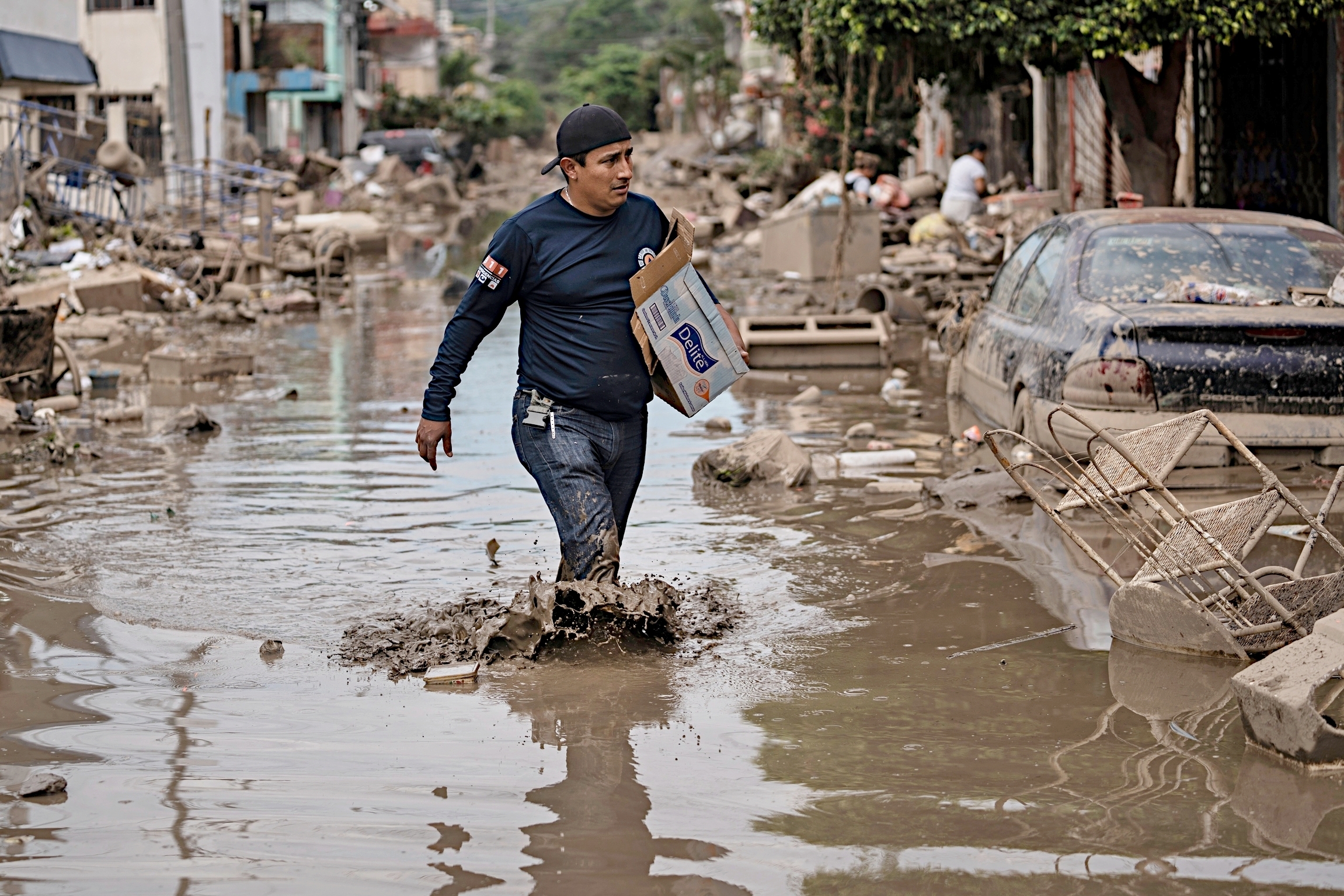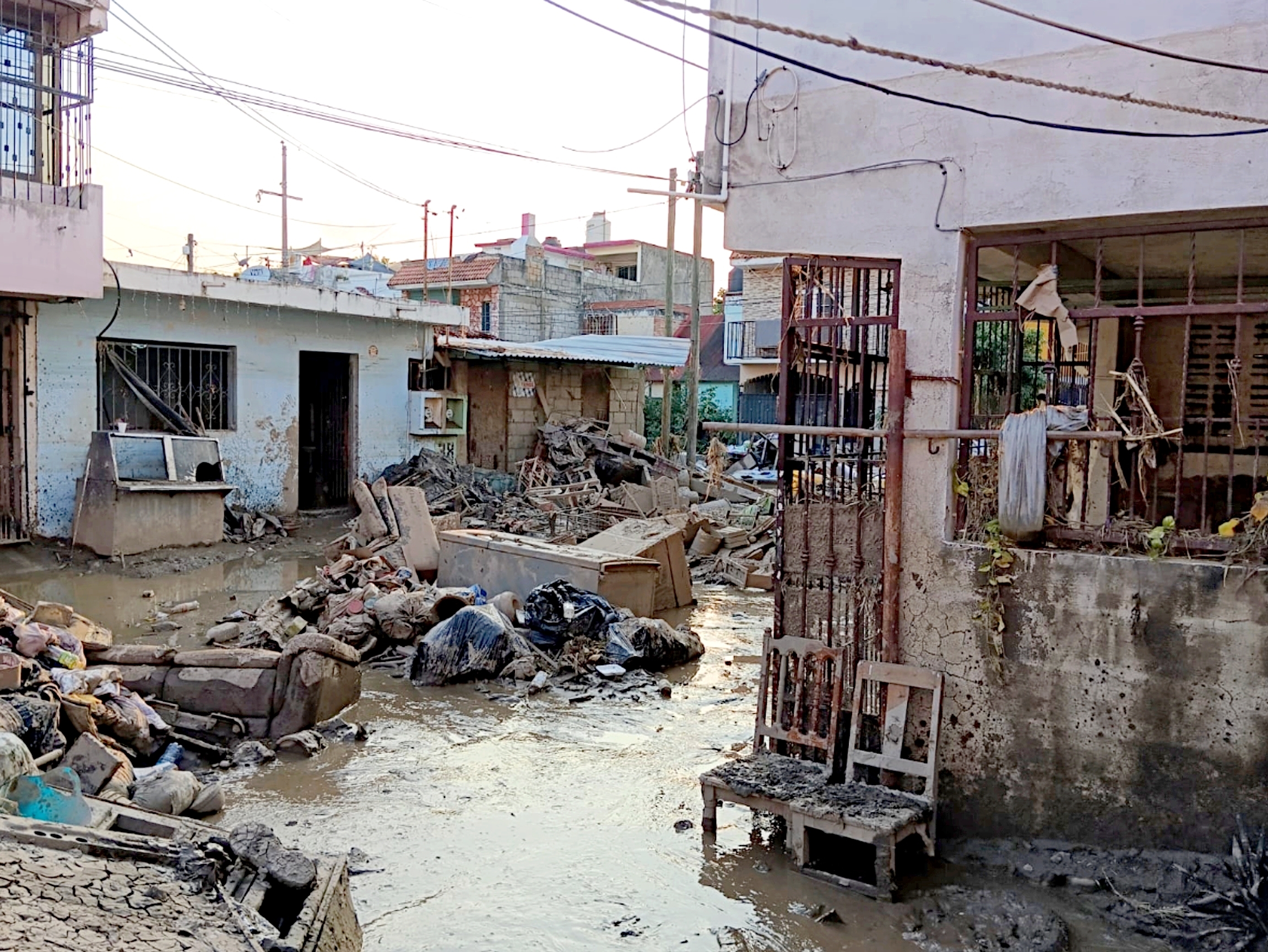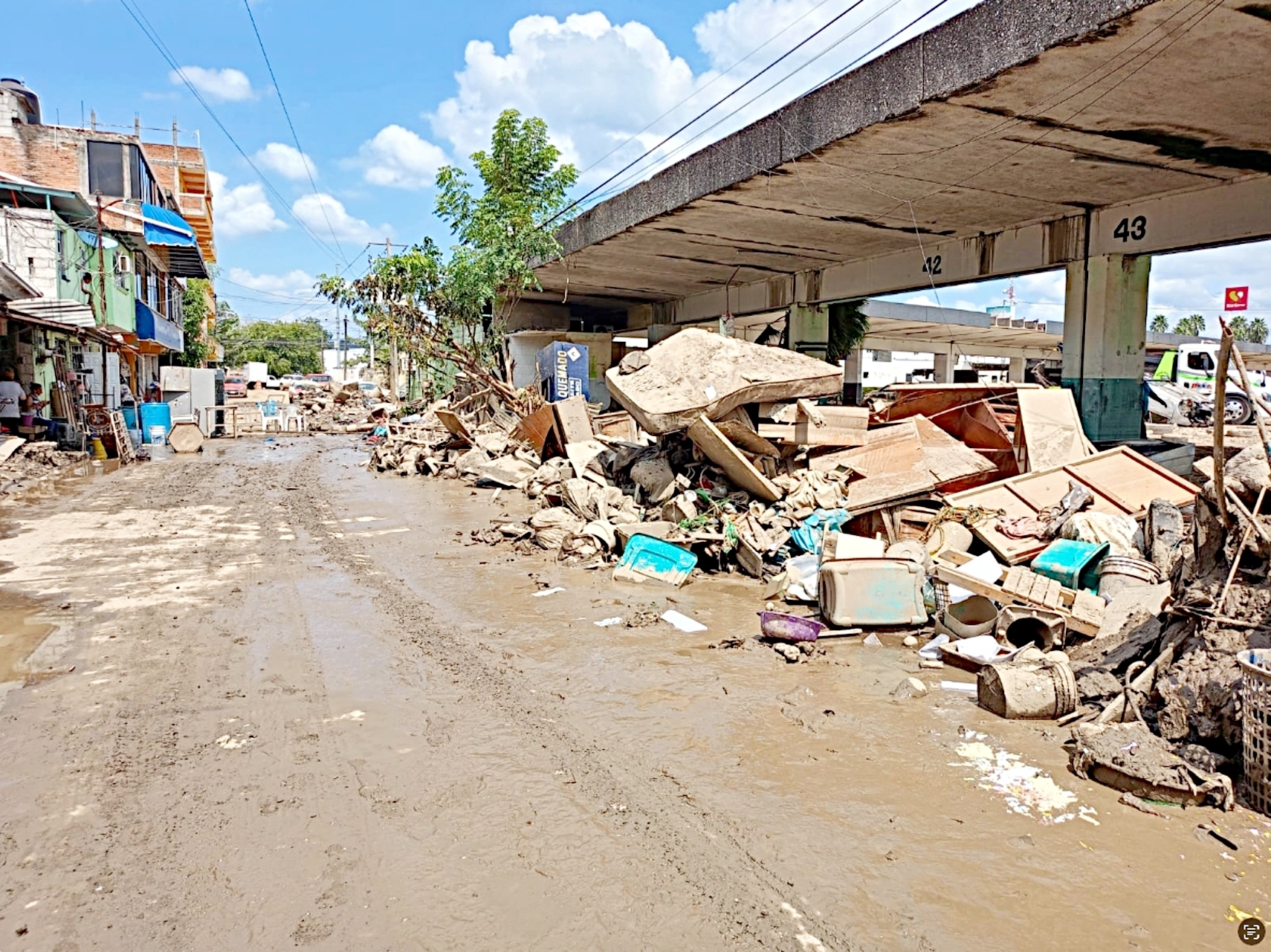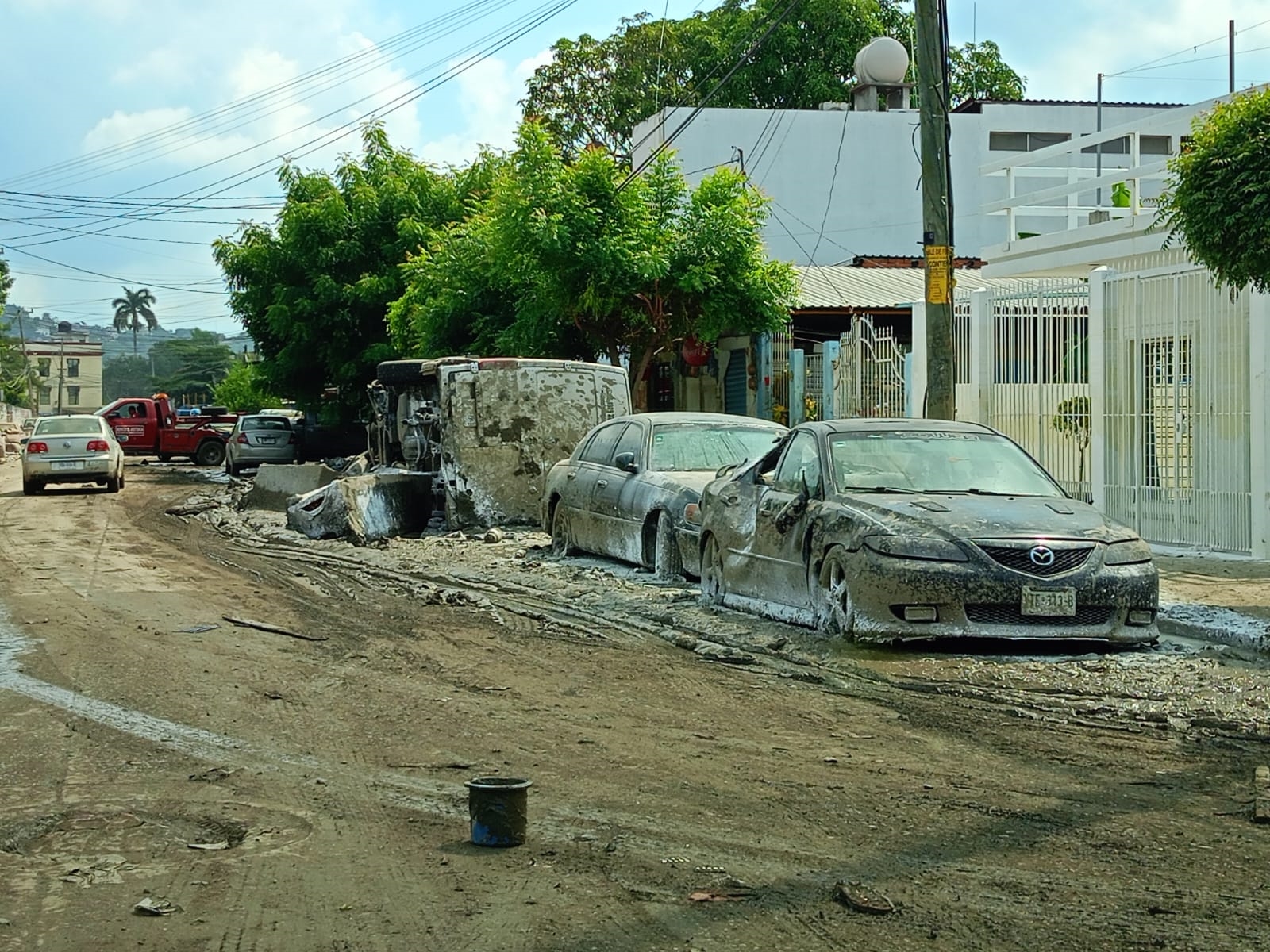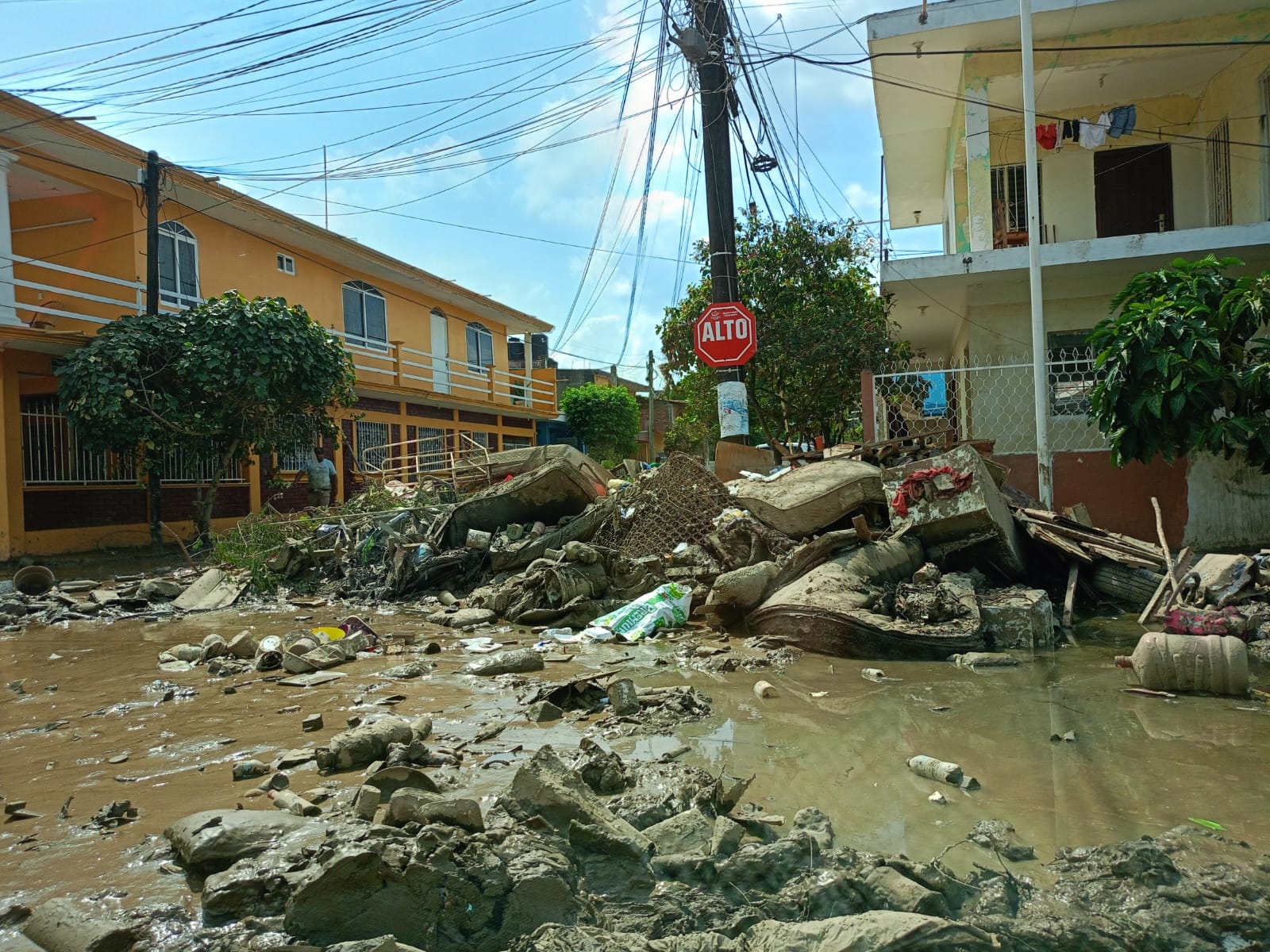'It's impossible that there's no reaction from the government.'

"They left us alone. We're trying to clean up on our own, with the help of our neighbors. It's impossible that the government isn't responding," complains María Luisa López, a resident of Colonia Morelos.
"At two in the morning (on Friday, October 10), the river was at its lowest point; at six, it was already level with the bridge," recalls Don Gregorio Bautista.
"At two in the morning the water was three meters below the bridge (Cazones 1). On the day of the flood, there was another image at six twenty: it was already at the level of the arch. In four hours, it rose three and a half meters.
At 6:50, the bridge was level. If the bridge is more than eight meters high, you can only imagine when the water blew over the edge," he adds.
From his point of view, the flood exceeded the 1999 flood by one and a half meters.
"By that time, there was no time to evacuate. Families in the Floresta, Gaviotas, Morelos, Palma Sola, México, and Plan de Ayala neighborhoods woke up to water pouring into the drains," he explains.
"In the houses, the water would rise to your waist in 11 to 15 minutes. There wasn't enough time to do anything," explains Mrs. Irene Morales Trujillo.
"This time the tragedy exceeded 50 percent; where it used to reach the patio, it now reached the bedrooms. Where the water reached a step, it now covered the roof," he explains.
Leticia Arciga, a resident of Colonia Floresta, shows a similar sequence on her phone:
"At one in the morning, a friend who works in Civil Protection called me. He said, 'The river is rising.' At three-thirty, we were already leaving the house, but the water was already coming through the drains. By six, there was no way out. Everything was lost," he says.
Leticia lives on Caoba Street, one of the lowest streets and now covered in mud. Her testimony sums up the confusion of that early morning.
"I've lived here for 20 years and I've never seen anything like this. In '99, the water took longer; this time it rose as if someone had opened a floodgate. There were no alerts, no patrols warning us. The only alarm that sounded was the Pemex one, but that's activated when there's an industrial risk, not for the civilian population," he clarifies.
He claims that the city does not have an early warning system or an updated risk map.
"There are no protocols here. The authorities appoint inexperienced politicians, people who can't read a risk atlas. The alert is given when the water is already up to your neck," he laments.
"We're alive, but we're still stuck in the mud."
Eight days later, Leticia and her neighbors are still digging through the mud.
"The people in the back hired a backhoe, but it got a flat tire. The municipal government hasn't come. They've already cleared their block, but my front yard remains unfinished. It's a herculean job, and here we are, in the mud and silence."
He shows another photograph taken mid-morning: a river of mud in front of his door, the street turned into a gray corridor.
"This is today. I uploaded it two hours ago. The rescue team and the municipal truck haven't arrived yet. The machines that are cleaning it are paid for by the residents themselves. It's maddening."
Your house is marked with the brown line of the level reached by the water: halfway up the door.
"That was at seven in the morning. They say the wall held, but what didn't hold was the negligence."
There is consensus among residents that the tragedy was avoidable.
"This wasn't natural," says Don Adrián Cruz, manager of a seafood restaurant in Palma Sola.
"It was a mixture of neglect, lack of dredging, and urban sprawl. Since May, the river hasn't dried up; no one has cleaned the lily pads or the mud.
When the storm hit, the riverbed was collapsed.
Everything that was once islands and trees disappeared, the river took them away."
They also criticize the irregular construction of housing on the banks.
"Families have lived in the area called La Quebradora for more than 30 years, right next to the river. They've been told to relocate, but there's no land or support. And when they get it, they return. It's an endless cycle."
The general feeling is that Poza Rica did not learn from '99.
"I'm surprised people are still so skeptical. It happened in '99, and now it's happening again. After this, there should be a plan like the one created after the '85 earthquake, when seismic alerts were finally created. Here we should have a flood alert, a real protocol. But the government keeps improvising."
The atmosphere in the city is one of anger and fatigue.
"There's a lot of blame to go around," says Judith, who helps her mother in the Lázaro Cárdenas neighborhood.
Nearby, in Colonia Floresta, residents protested the authorities' failure to remove debris.
Mayor Fernando "El Pulpo" Remes is mentioned sarcastically.
"He's been getting rained on and criticized; he hasn't even come out of hiding," Alfonso Gómez summarizes.
"The wall was too small, the storm drains are old, and the river changes every year. No engineering system can withstand it without maintenance," the Gaviotas resident accuses.
A week after the Cazones flood, the city remains trapped between mountains of mud, garbage, and debris.
Here's an idea that's repeated from mouth to mouth: there is no strategy.
Testimonies gathered in neighborhoods such as Floresta, Gaviotas, Lázaro Cárdenas, Morelos, and Palma Sola describe a territory where reaction replaced prevention, logistics were improvised, and aid arrived without clear order or priorities.
"There's no strategy, there's no money, there's no support," summarizes Julita García, a resident of Floresta.
"The census is all very well, but right now, what people need is to clean their homes to make them habitable and regenerate. The streets aren't in good condition, and yet, they want people to be in their homes to census them. First, clean the streets and homes, and then do the census," he adds.
The streets are impassable, there are improvised removals over mud puddles, and neighborhood crews trying to clear a path with rented backhoes.
"It's a titanic job," reiterates Mrs. Leticia Arciga, from Floresta.
"The people on the street behind me hired a backhoe, but it got a flat tire. They've already cleared their block, but my situation is still impossible. Everyone has their own agenda; I understand, but there's no one to coordinate," he complains.
"There are food supplies that can't be eaten and mattresses with nowhere to put them. The neighbors appreciate the solidarity, but they ask for logistical rationality. They don't want to be giving away mattresses. Where are they going to put them? Food supplies are appreciated, but they even bring oil. Here we are surrounded by mud, bad smells, and flies. We need fast and affordable food, safe water, chlorine, face masks, boots, shovels. That's what's urgent. You can't eat a hot stew like this, out in the open, with everything smelling, and there's no gas to use the oil," he accuses.
As the mud dries, the emergency economy grows.
"An hour of backhoe work used to cost 600 pesos; now they charge 1,000 pesos an hour," says Marcos Cabrera, a resident of Morelos.
"And if it goes flat, the first one is on the operator's account; the next ones are on the neighbors' account. They're already profiting."
Agustín, a machine operator, looks exhausted.
"I need 60 liters of diesel every day, and my tires get punctured twice a day, and I'm alone. How do I operate?" he says.
The operational division into "five areas" exists, witnesses confirm, but it is perceived as uneven.
The Army, the Navy, the state government, and the City Council divided up support for the colonies under the mud.
"Today we tried to go in for clothes; it's not possible. We're still shipwrecked in someone else's house," Leticia admits.
"The family supports and shares, but the government doesn't show up," he points out.
Amid piles of mud, swollen furniture, and poles with uprooted wires, residents of Colonia Morelos and Palma Sola describe a city that still lacks a clear path for cleanup and support.
The testimonies agree on two immediate demands: removing debris and organizing street and block interventions, before the census and the distribution of aid, which today, they say, "is not enough" or "is of no use where you can't even cook."
"From mud to top, we live in Morelos," says a woman who reached a distribution point after wading through downed power lines and stopped traffic.
"My husband raised it about a meter and a half in '99; now it's three meters up to the roof. The second-floor window is halfway open," she says through tears.
Around them, other neighbors comment that "yesterday they found a hotel employee" swept away by the current "over there," and that there are still people missing in the area.
"In Morelos, there are still about two or three missing people," says a woman.
At 106 Pánuco Street, Palma Sola, Don Julio López reports the danger. "I began monitoring: every 10, 20 minutes it rose 10 or 20 centimeters. At 5:00 a.m., it reached 8:50 a.m."—a level residents use as a reference for the Cazones' growth that night.
"They didn't say anything about that, but I imagine it must have reached nine."
His family barely managed to get clothes out in a quilt:
"We never thought it would happen this fast. In '99, it reached half our house; now it's more than half our house, and we were already stuffed."
Infection is another calamity.
"First, they should take away the dead animals. The trail was left right after slaughter and it smells strong. At the butcher shop on the corner, they say there's a pig's body under the mud."
Remes, the Mayor, was struck out.
Here it is known that he received a federal slap on the wrist.
The man who in the 1960s was part of the memorable "Infield of the Million," a nickname coined by narrator Pedro "Mago" Septién and which brought together Rubén Esquivias (first base), Kiko Castro (second base), Remes (short stop) and Armando Murillo (third base), this time was part of the outrage.
"El Pulpo" was seen in his truck in the Las Granjas neighborhood. Because of his insensitivity and lack of response, neighbors threw mud at him.
In a meeting with Pemex personnel, an engineer indicated that the president's displeasure with the local and even state performance in Poza Rica was high-voltage.
And although he didn't let ground balls go by on the field, here the water got into his domain.
To top it all off, people complain that as a baseball promoter he hasn't even created a single local diamond in Poza Rica.
"It's better to unveil a statue of him in the municipal gymnasium on Thursday, September 16th. As soon as the tragedy is over, we'll tear it down," warns Francisco Loera, a worker from Colonia Floresta.
That idol from the 60s, here in Poza Rica they don't even want to see him.
Reforma

